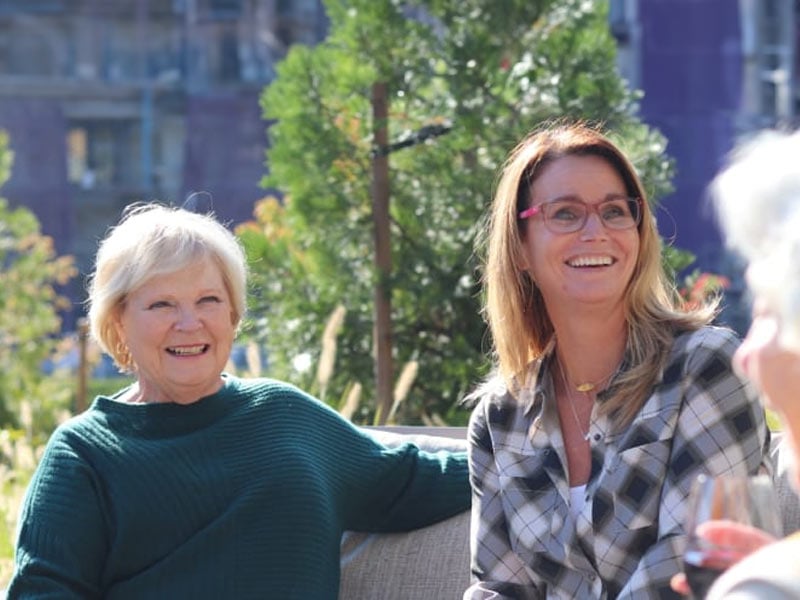1. Location, Location, Location!
As with any move, location is key! Many aging adults would like to stay in the town they currently reside in, or move closer to family. Consider your preferences for the peace and quiet of being in nature, or access to cultural activities such as the theater, shopping and excursions. Committing to where you want to live is a great first step.
2. Size of the Community
The smallest assisted living facility in the U.S. has only four licensed beds; the largest has almost 500, according to The National Center for Assisted Living (NCAL). Size matters in a staff-to-resident ratio as well as the types of services and amenities offered. Larger communities may be more likely to offer amenities like movie theaters and swimming pools, or include multiple living options from independent and assisted living to memory care. In addition, there may be a general “vibe” you enjoy more — knowing everyone you see each day, or being more autonomous.
3. Services Offered
Many assisted living facilities offer dining services, housekeeping, medication management, exercise and wellness programs, and some provide tailored services based on specific health needs. For instance, NCAL reports that nearly 60 percent of communities offer programs for dementia and diabetes care. Keep a list of the most important services to you as you evaluate each community.
4. Transitions to Higher Care
The idea of moving from total independence to a residence with care can be daunting, but it’s important to look down the road at what might be coming up. Some assisted living facilities are part of a larger continuing care retirement community where residents can move from independent living to assisted living and memory care as their needs change over time.
5. Cost of Living
Just like buying a home, it’s important to know what you can afford. Savings, long-term care insurance, home equity life insurance, benefits for veterans and other resources are some of the ways people pay for assisted living. Communities differ in their pay structures too, so make sure to ask what services and amenities are included in the base rent.
6. Culture of the Residents and the Management
You can't really know what it's like to live in an assisted living facility until you do it, but you can get a sense of it by visiting. Does it feel warm and comfortable, or cold and sterile? We recommend visiting the community, talking with the staff and residents, eating at their restaurants and experiencing the overall environment.
7. Safety and Track Record of the Community
Safety is one of the most essential areas to investigate. When visiting a community, ask how residents contact the nurse, medication technician or caregiver if they need anything. Do they have pull cords in the rooms? Do residents wear pendants? Ask if there is a registered nurse on staff, or on call 24/7, and how they staff their building during the day as well as in the evening. Ask how the staff will care for your specific needs.
8. Staff Expertise and Friendliness
Pay attention to how the staff interacts with residents. This will be your home, so it’s important that you feel respected by everyone you’ll come in contact with. Sitting down with the management and asking questions will give you a better idea of their commitment to hiring the right people.
9. Activities and Resident Life
Before you visit, check their activity calendar. Is there a good balance of internal activities and outings away from the community? Are there religious services if that’s important to you? Schedule a visit during an activity so that you can experience it first-hand, then pay attention to how many people are participating and how engaged the staff and residents are.
10. Meal Services and Plans
Come for lunch or dinner! The dining experience is very important. Most retirement communities will allow you to enjoy a meal free of charge. Visit with the dining services manager and find out about dining options. Do they have diabetic entrees? Do residents order off a menu or are their choices limited each day? Is it mandatory to eat in the dining room or can residents have meals delivered to their room? How many meals are served per day?
Bonus Tip: Ask around!
Talk to others you may know who have loved ones living in the community you are visiting. If you know any of the residents, stop by for a visit and ask how they feel in their community. Ask your doctor their opinion if they have referred people there. In the end, trust your instincts. You’ll know the right community when you find it. If you are currently searching for yourself or a loved one, we’d be happy to answer any questions you have.













